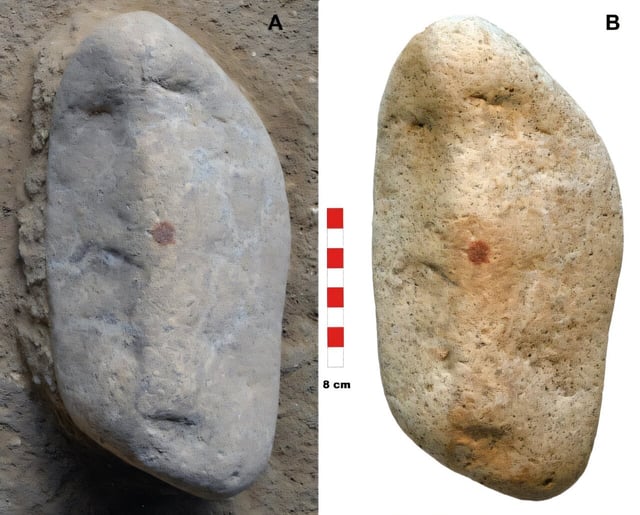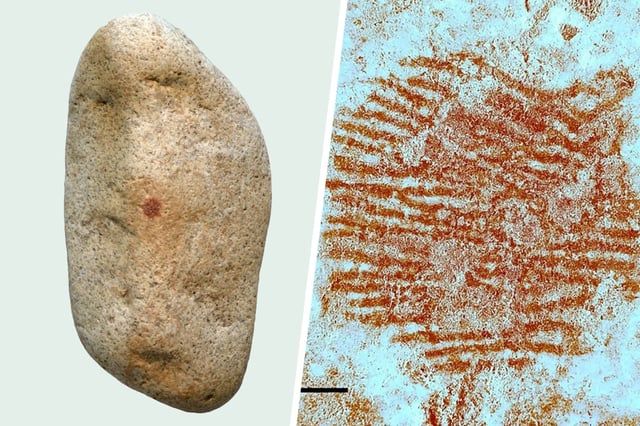Overview
- A quartz-rich pebble unearthed at Spain’s San Lázaro rock shelter bears a red ochre dot that completes the contours of a human face, dated to around 43,000 years ago.
- Analysis showed the pigment was ochre not native to the site and the red mark preserves the oldest complete Neanderthal fingerprint, likely from an adult male.
- Geochemical evidence indicates the stone was carried more than 5 km from the Eresma River, suggesting it was deliberately selected for its fissures resembling facial features.
- The study identifies three core cognitive processes—mental conception, deliberate communication and meaning attribution—underpinning the creation of this early art object.
- This discovery adds to growing evidence of symbolic behaviour and abstract thought among Neanderthals, reshaping views of their cultural and cognitive capabilities.



